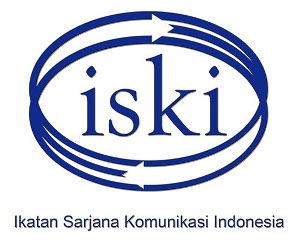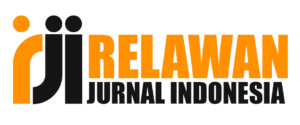BUDAYA TUTUR DIGITAL DALAM PERSONAL BRANDING MELALUI STIKER LINE GENERASI MILLENIAL
Abstract
ABSTRACT
Millenials are seen using social media more often which has replaced forms of communication to become digital speech. Personal branding through digital speech in the social media life has a significant role in representing themselves. Personal branding is constructed from culture, environment and how individuals are brought up by. Stickers provided in Line application is one of the digital speech culture which are now oftenly used actively in communicating. Millenials tend to use these stickers so they have an ability on how they want others to portrait them. The research focuses on : (1) to describe how these millennials use these stickers to construct a personal branding in Line group, (2) to describe the reasons and use of these stickers in line. A qualitative approach in ethnography virtual method is used, using in-depth interview and observation. The result of this research shows that (1) they buy stickers that represent themselves and their feelings towards a subject to support their personal branding in Line group (2) millenials use stickers to support their meaning in conversations, when they can’t find the verbal words to describe their feelings, when they are forced to respond fast, and because the stickers are unique and funny.
Key words: Stickers, Millenials, Personal Branding, Media Social and Line Group
ABSTRAK
Generasi milenial menggunakan media sosial yang telah menggantikan bentuk-bentuk komunikasi menjadi sebuah budaya tutur digital. Personal brandingmelalui tutur digital dalam sosial media sepertinya tengah memiliki peran yang penting dalam mempresentasikan identitas seseorang. Personal branding itu sendiri dikonstruksi lewat budaya, lingkungan dan bagaimana seseorang dididik dalam kehidupannya. Penggunaan stiker-stiker yang terdapat dalam aplikasi Line grup merupakan salah satu budaya tutur digital yang semakin hari memiliki peran aktif dalam berkomunikasi. Generasi ini lebih senang menggunakan stiker-stiker ini untuk membentuk gambaran dirinyasekaligus personal branding-nya. Fokus penelitian ini adalah untuk (1) menggambarkan bagaimana generasi milenial ini menggunakan stiker-stiker ini untuk mengkonstruksi sebuahpersonal branding, dan (2) menggambarkan alasan penggunaan stiker-stiker tersebut. Metodelogi penelitian yang diggunakan adalah pendekatan kualitatif dengan metode etnografi virtual. Teknik pengumpulan data menggunakan wawancara, observasi dan studi dokumentasi. Hasil penelitian menunjukkan : (1) mereka biasanya membeli stiker yang dapat mempresentasikan dirinya dan perasaan mereka pada sebuah subjek pembahasan untuk mendukung personal branding mereka dalam grup Line, (2) Generasi milenialmenggunakan stiker untuk; mendukung maksud mereka dalam sebuah diskusi, ketika mereka tidak dapat menjelaskan sesuatu lewat perkataan verbal, ketika mereka terpaksa untuk menanggapi sesuatu dengan cepat dankarena stiker tersebut dianggap unik dan lucu
Kata Kunci: Stiker, Generasi millennium, Personal branding, Media sosial dan Grup Line
Full Text:
PDFReferences
Ambarwati, A., & Raharjo, S. T. (2018). Prinsip Kepemimpinan Character of A Leader pada Era Generasi Milenial. Philanthropy Journal of Psyocology , 114-127.
Arief, L. (2019, Januari 26). Why personal branding is important in social media. (S. S. Indriani, Interviewer)
Arif, M. C. (2012). Etnografi Virtual, Sebuah Tawaran Metodelogi Kajian Media Berbasis Virtual. Jurnal Ilmu Komunikasi , 165-179.
Basrowi, & Sukidin. (2002). Metode Penelitian Kualitatif Perspektif Mikro. Surabaya: penerbit Insan Cendekia
Creswell, J. W. (2013). Qualitative Inquiry & Research Design, Choosing Among Five Approaches. California: SAGE Publication, Inc.
Johnson, K. M. (2017). The Importance of Personal Branding in Social Media: Educating Students to Create and Mange their Personal Brand. International Journal of Education and Social Science , 21-27.
Karaduman, I. (2013). The Effect of Social Media on Personal Branding Efforts of Top Level Executives. Procedia - Social and Behavioral Sciences , 465-473.
Mulyana, D. (2001). Metode Penelitian Kualitatif. Bandung: PT Remaja Rosdakarya.
Perrin, A. (2015). Social Media Usage: 2005-2015 65% of adults now use social networking sites - a nearly tenfold jump in the past decade. pew Research Center.
Putra, Y. S. (2016). Theoritical Review: Teori Perbedaan Generasi. Jurnal Ilmiah Among Makarti , 123-134.
Republika, P. D. (2016, 12 26). Republika.co.id. Retrieved 2 12, 2019, from Rebublika website: https://www.republika.co.id
Sawyer, R. (2011). The Impact of New Social Media on Intercultural Adaptation. Retrieved Januari 16, 2019, from DiigitalCommons@URL: https://digitalcommons.uri.edu
Sherlyanita, A. K., & Rakhmawati, N. A. (2016). Pengaruh dan Pola Aktivitas Penggunaan Internet serta Media Sosial pada Siswa SMPN 52 Surabaya. Journal of Information Systems Engeneering and Buisness Intelligence , 17-22.
Waterman, A. S, (1984). Identity formation: Discovery or Creation? Journal of Early Adolescence, Vol 4, Issue 4. Sage Journals
DOI: http://dx.doi.org/10.30813/s:jk.v13i1.1794
Refbacks
- There are currently no refbacks.
Copyright (c) 2019 SEMIOTIKA: Jurnal Komunikasi
Publisher
Editorial Board SEMIOTIKA: Jurnal Komunikasi
Department of Communication
Faculty of Social Science and Humanities
"UNIVERSITAS BUNDA MULIA"
Lodan Raya St No.2, North Jakarta 14430
Phone: +62 21 692 9090 ext. 348
Email: SEMIOTIKA@ubm.ac.id













